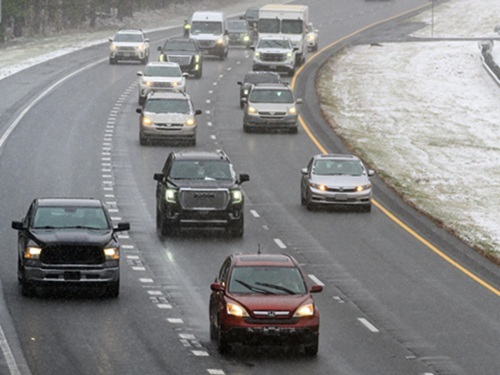The nomination portal is open for the 2023 National Roadway Safety Awards. Begun in 1999, this biennial program – sponsored by Roadway Safety Foundation and the Federal Highway Administration – honors projects and programs that cost-effectively help the nation achieve progress toward eliminating highway fatalities and serious injuries.
[Above image by the RSF]
According to Bruce Hamilton, RSF’s new executive director, the National Roadway Safety Awards program examines the “best of the best” using safety effectiveness, innovation/transformation, and cost-effectiveness/economic strength as criteria in determining which projects win. Interested public agencies have until June 16 to submit their projects for consideration.
Seven organizations received National Roadway Safety Awards in 2021, including four state departments of transportation.
The four state DOT winners are:
- The Florida Department of Transportation for its use of Smart Work Zone Safety Technologies for Arterial Roads that suffer higher fatality rates than interstates. Florida DOT studied the use of Active Work Zone Awareness Devices or AWADs, which employ radar in combination with light emitting diode or LED signs to warn drivers of upcoming work zones, displays their travel speed and delivers safety messaging. Florida DOT went further by linking the AWADs to drivers using the Waze navigation app. The initiative’s impressive results include vehicle speeds entering arterial work zones dropping by 10.6 percent, safe driving behavior increasing by 39 percent, and risky driving declining by 34 percent.
- The North Carolina Department of Transportation for its Long-Life Pavement Markings Safety Initiative to reduce lane departure crashes, a major safety challenge in a state where 14,000 fatal and serious-injury lane departure crashes occurred between 2015 and 2019. They improve the visibility of markings on curvy roads, in inclement weather, and at night. NCDOT tested the long-life markings on more than 400 miles of roadway, recording an overall 13 percent reduction in lane departure crashes. The long-life markings also provide at least five to seven years of adequate retro-reflectivity and pavement delineation, as compared with approximately two years from standard markings.
- The California Department of Transportation for its transformative 2020-2024 Strategic Highway Safety Plan or SHSP to reverse a trend of rising fatalities and injuries on state roads. With an average of 10 people dying every day on California roads, Caltrans created a highly targeted approach to safety with its SHSP update. It designates high-priority challenge areas, expands and diversifies membership of the SHSP committee, implements the program with innovative tools, and evaluates progress on a continual basis. Four newly adopted guiding principles form the foundation of the SHSP: Integrate equity, implement a safe system approach, double down on what works, and accelerate advanced technology. The plan is instrumental to the state’s goal of achieving zero fatalities and serious injuries by 2050.
- The Texas Department of Transportation and Texas A&M Transportation Institute for its all-new Safety Scoring Tool. With fatalities on Texas rural non-interstate roads occurring at twice the rate of other Texas roads, TxDOT collaborated with the Texas A&M Transportation Institute to develop a user-friendly means of evaluating the safety performance of rural highway design elements. The scoring tool assesses the total effects of changes in lane and shoulder width, horizontal and vertical curve geometry, clearances to objects, and other factors. The tool is now required for all rural two and multi-lane non-access controlled projects, ranging from routine maintenance to complete reconstructions, fostering a proactive, rather than passive or reactive, approach to safety.
 Nation
Nation
Registration Open for AASHTO’s Winter Rail Meeting
December 19, 2025 Nation
Nation

